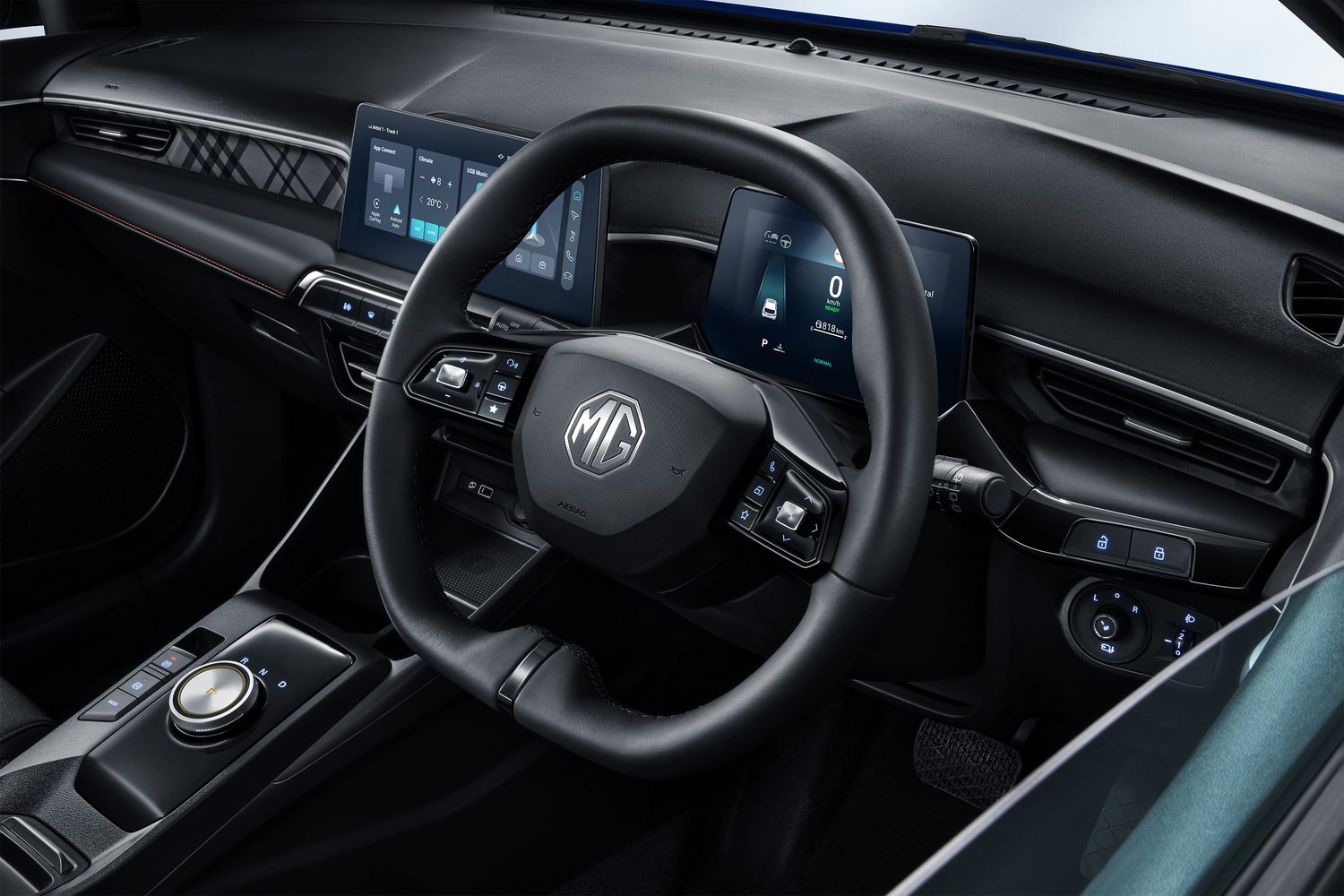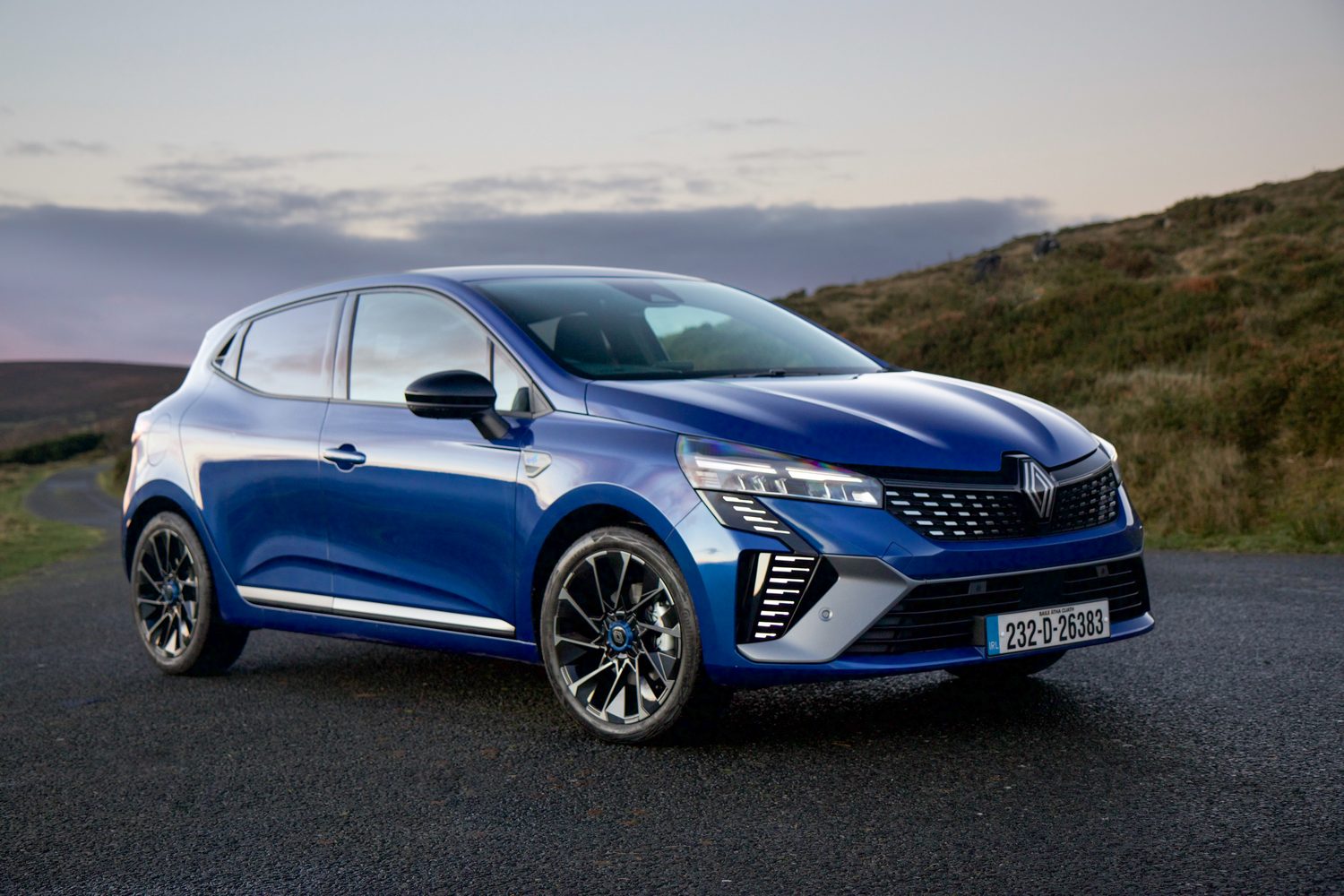Although the MG3 nameplate will be familiar to buyers in other markets, it’s new to Ireland, and indeed the car reviewed here is a new generation of the five-door supermini hatchback in any case. As the name suggests, it sits below the MG4 and MG5 EVs (electric vehicles) in the line-up taking up position as the cheapest way into modern MG ownership.
The MG3 is offered exclusively with hybrid power, the Chinese company labelling it “Hybrid+” as it’s particularly proud of a technical specification that mixes impressive official economy figures with notably strong performance stats. MG is unashamedly targeting the incredibly popular Toyota Yaris with this car and hoping that an eye-opening price will tempt buyers away from what has become the default supermini.
Our first taste of the new MG3 is on Irish roads in the top specification, called Exclusive.

How much is the 2024 MG3?
We put this review live the same week it has been announced that Chinese-made cars (such as the MG3) will soon attract extra import duty across the EU. Nothing official has been confirmed for Ireland or by MG so, at the time of writing, the MG3 starts at just €22,995. Given that all versions use the same, powerful hybrid system, that’s excellent value. While there are other similarly-sized cars on the market for that price and less (the recently-updated Hyundai i20, for one, the Dacia Sandero another), none with a full hybrid system gets close. The entry-level Toyota Yaris Hybrid is over €27,000, for reference.
The cheapest MG3 is called the Essence (due to arrive a little later in 2024) and highlights from the standard equipment include adaptive cruise control, an alarm and immobiliser, air conditioning, electric windows all round, digital instrumentation, touchscreen infotainment with built-in navigation, a 360-degree parking system, Bluetooth and smartphone mirroring.
Notably, it does without a steering column that adjusts for tilt, which seems a little tight when the other versions in the range have it. Neither does it get the six-speaker audio system and USB port in the rear the others feature, and same deal with alloy wheels. Still, not bad for the money.
Next up is the MG3 Excite, from €24,745. On top of the better stereo, extra USB port and (16-inch) alloy wheels mentioned above, this additionally features auto lights, a heated steering wheel and heated and electrically adjustable door mirrors.

The top-ranking MG3 Exclusive is still affordable, at €26,745. It is piled high with extra equipment, with extra driver assistance safety items in the MG Pilot system (more on that below), automatic wipers, LED headlights, keyless entry, rear privacy glass and synthetic leather upholstery.
Finally, MG includes a seven-year warranty up to 150,000km.
A look inside the MG3
The MG3 has a modern and smart-looking cabin with plenty of equipment as mentioned above. The distinctive steering wheel is a high-quality item that’s good to hold, too. Though it takes a while to understand what all the buttons on it do, the switchgear is at least solid and tactile. The cabin feels built to a price in places thanks to plenty of hard plastics, but that’s to be expected given that price. More importantly, it feels well put together. Shame the seats aren’t more supportive though, as heavier people won’t find them comfortable over longer journeys, even if there is plenty of room all round.
Same story in the back, with decent headroom and legroom for the sector. There are even air vents in the rear. In terms of practicality, the rear-seat back doesn’t split, but does fold down in one piece if you need to carry larger items. Otherwise, the boot volume is rated at 293 litres, which is about average for the class.
The MG3’s on-board technology
A 10.25-inch touchscreen sits in the middle of the dashboard for the infotainment, settings and climate control. It’s augmented by a few shortcut buttons underneath, though as ever we’d prefer separate physical controls for the air conditioning and heating. The on-screen menus are a bit all over the place, too, but it’s responsive enough and an owner will soon find their way around it. In front of the driver is a 7.0-inch screen displaying all the driving information. The graphics are sharp enough, but again, the layout isn’t the most intuitive.

Using the smartphone mirroring is preferable to relying on the native touchscreen menu (Apple CarPlay and Android Auto are standard), though it is packed with features. And four USB ports are fitted to all versions.
How many child seats can I fit in the MG3?
Like most cars in the MG3’s class, no matter what type of seats or boosters your kids are in, it won’t be possible to fit three across the rear due to the narrow middle seat. And though the MG3 is one of the more spacious superminis, bulky rear-facing child seats will severely limit the amount of adjustment available in the position of the front seats. As expected, there are two ISOFIX locations in the rear, and it’s also possible to disable the airbags around the front passenger chair if you need to mount a baby or child seat there. The boot should just about squeeze in a folded ‘travel system’ style buggy depending on how bulky it is, though probably not the carrycot section.

How safe is the MG3?
At the time of writing, the MG3 hasn’t been tested by Euro NCAP so we don’t know how it will fare in the standardised safety tests. Its predecessor (never sold in Ireland) didn’t score well, but the good news is that the new car is on a more modern platform, so we are optimistic for a better result. It’s encouraging to see the electric MG4 gain a five-star rating from the independent safety organisation.
The MG3’s active safety systems are grouped together under the ‘MG Pilot’ umbrella with the minimum level including Active Emergency Braking with Pedestrian & Bicycle Detection, Lane Keep Assist, Traffic Jam Assist, Driver Attention Alert and Front Collision Warning. Upgrade to the Exclusive model and it also gets Blind Spot Detection, Lane Change Assist, Rear Cross Traffic Alert, Door Opening Warning and Lane Departure Warning System.
As you’d hope, all versions have anti-lock brakes, stability control and a full complement of airbags.
Driving the MG3
Though completely automatic, and easy to operate via a tactile rotary drive selector between the front seats, the MG3’s hybrid system takes a little getting used to driving as it doesn’t always respond to your foot on the accelerator as you might expect. When getting up to speed, for instance, it seems slow to rouse the 1.5-litre petrol engine from its slumber, instead relying on the 100kW (136hp) electric motor for as long as possible.

That’s great in stop-start traffic as it maximises zero-emissions driving for as long as there is charge in the battery, but out on the open road it makes for a disconnected feeling, and you never quite know when the full performance is coming on tap. We experimented with the driving modes - Eco, Normal and Sport - and found the same characteristics throughout, with even less response in the economy-focused Eco setting, as is the norm. The MG3 has quite a small battery in comparison to those in plug-in hybrid cars, and it’s charged up by the engine and brake energy regeneration (using the electric motor as a generator to slow the car and recharge the battery at the same time), not by plugging it in, but it seems to use the “EV” mode without the engine running quite frequently, nonetheless.
When the engine and motor are working together properly, the MG3 is undoubtedly swifter than it needs to be. The engine is commendably smooth and quiet in normal operation, too. Enhancing the experience is comfortable suspension, which has been achieved without sacrificing stability, as the MG feels secure and trustworthy in the corners, too. The steering is a little too light, long-winded and lacking in feedback for our liking, but that’s unlikely to bother most buyers.

More annoying is the inconsistent feel through the brake pedal as the car balances brake energy regeneration with conventional friction braking. This inconsistency is unfortunately present even if you reduce the level of regeneration to the minimum (done through the central touchscreen).
How economical is the MG3?
According to the official ‘WLTP’ figures, the MG3 uses 4.4 litres/100km, and our experience shows that may be achievable at lower speeds. In mixed driving featuring busy urban roads, hilly countryside and fast-moving motorways we saw an overall average of 5.0 litres/100km, indicating that this is an efficient car. That’s backed up by the 100g/km CO2 figure, meaning low annual motor tax.
The reasons you’d buy an MG3

Despite the unusual feel of its hybrid system, the MG3 lives up to its maker’s promise in terms of blending real-world efficiency with more performance than most rivals can muster. Buyers are unlikely to care too much about the latter, but they’ll find it difficult to ignore how much car for their money the MG3 offers.
Ask us anything about the MG3
If there’s anything about the MG3 we’ve not covered, or you’d like advice in choosing between it and other cars, you can avail of our (completely free) expert advice service via the Ask Us Anything page.





















